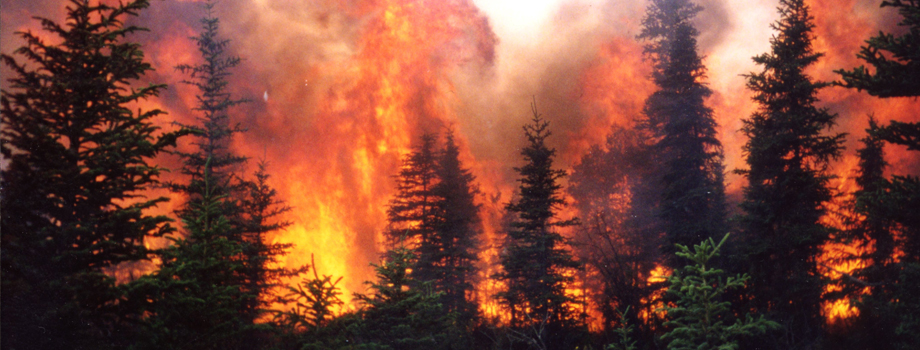
Wildfire in Alaskan black spruce forests.
Credit: Photo by Laona DeWilde
Interior Alaska: black spruce and mosses as far as the eye can see. New research suggests that image may change dramatically over the next century. As the intensity of fires in interior Alaska increases, forest regrowth is shifting from spruce to deciduous species such as trembling aspen and Alaska paper birch. But intense fires also make it more difficult for these deciduous species to get a start in forest gaps when older trees fall. The net effect, say forest ecologists from the Bonanza Creek (BNZ) LTER, may be a more open, grass- and shrub-dominated landscape.
In their Forest Ecology and Management paper, the researchers explore several possible outcomes of the changing fire and gap regimes. These include persistent deciduous forest, cycling between deciduous and spruce forest, as relict spruce populations recolonize after an interval of deciduous forest, and conversion to an open landscape of grass and shrubs. Each of these outcomes has different implications for ecosystem services such as regional climate, carbon storage, and water storage.
Alexander, Heather D., and Michelle C. Mack. “Gap regeneration within mature deciduous forests of Interior Alaska: Implications for future forest change.” Forest Ecology and Management 396 (2017): 35-43. doi.org/10.1016/j.foreco.2017.04.005.










